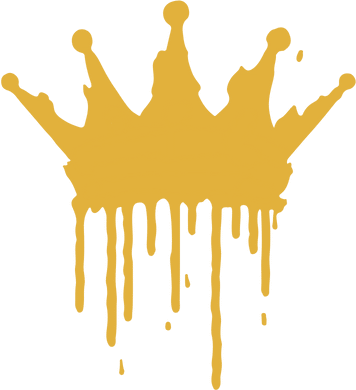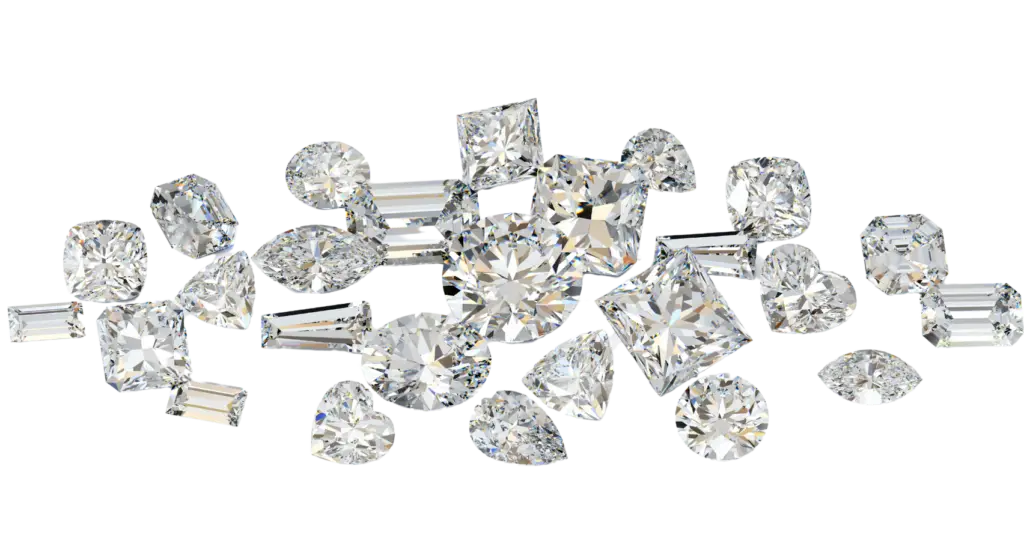Finding ‘the one’ – and here we mean diamond, not man – isn’t just about maxing out on size or sparkle. It’s about choosing something that feels like you – your style, your values, your story.
So how do you pick one that’s as unique and wonderful as you?
The Shape…
Your diamond’s shape sets the tone for the whole ring – it’s the main character, what everything else revolves around. Whether you love timeless classics or lean towards modern edge, each cut tells a story.
Round Brilliant: A Sparkle Bomb
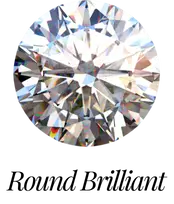
What it says: You appreciate tradition, elegance, and a sparkle that stands the test of time. The round brilliant is the most classic diamond shape, perfected over 100 years to deliver maximum fire and brilliance.
The details: The 58-facet cut is designed to reflect light better than any other shape, giving that signature bling. It’s also the most researched and graded shape, meaning you’ll have a wealth of information to ensure you get the best quality for your budget.
Fact: Round brilliants account for over 75% of all diamond sales. Their symmetry and light performance are unmatched, making them a go-to for those who love timeless style.
The Oval: Finger Spread To The Max
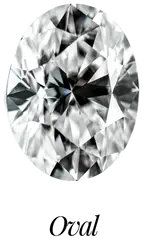
What it says: You love clean lines, soft romance, and a little contemporary edge. Ovals elongate the finger and create a light, airy brilliance without the sharp angles of other geometric cuts.
The details: The elongated shape gives a larger face-up appearance than a round diamond of the same carat weight, making it a savvy choice if you want a bigger look for your budget. Look for an oval with an excellent cut to avoid the ‘bowtie effect’ – a dark shadow that can appear in the centre if not cut well.
Fact: Thanks to its proportions, an oval diamond can appear up to 10% larger than a round diamond of the same weight.
Emerald Cut: Art Deco Luxury
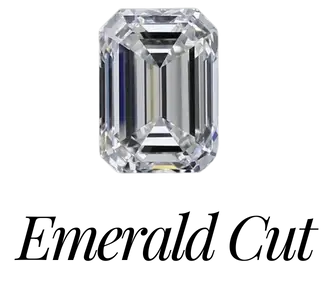
What it says: You appreciate understated glamour. The emerald cut doesn’t rely on sparkle – it has a ‘hall of mirrors’ effect created by its long, step-cut facets, giving it a sleek, refined look.
The details: This cut highlights clarity more than any other shape, so prioritise a high clarity grade to keep it looking crisp and clean; because emerald cuts have fewer facets, they tend to show imperfections more easily than other cuts. But watch out for the ‘glass’ effect: you want to make sure you can see depth and movements in the facets as the stone moves.
Cushion Cut: Vintage Glow
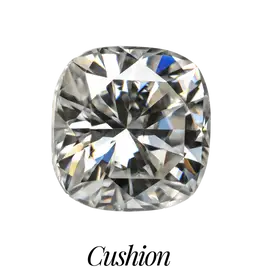
What it says: You love romance, history, and a soft, warm sparkle. The cushion cut has been around for centuries, with a pillowy shape that softens the edges of a classic square or rectangular diamond.
The details: With larger facets and a more open structure, cushion cuts reflect light differently from brilliants – they glow, rather than glitter. They’re also one of the most versatile shapes, working beautifully in vintage and modern settings alike.
Fact: The cushion cut dates back to the 1700s and was once known as the ‘mine cut.’ It was the original diamond shape before cutting technology advanced.
Pear: Point Up Front, Party In The Back
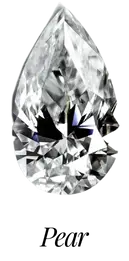
What it says: You’re bold, artistic, and love to stand out. The pear cut is a mix of a round and marquise shape, creating a teardrop silhouette that’s both elegant and unexpected.
The details: Pear shapes have a naturally elongated look, making fingers appear longer and more slender. They also offer more visual size per carat compared to round diamonds. However, symmetry is key – make sure the tip is centred for a well-balanced shape. And encase it well within its setting: pear tips can be prone to chipping if the claws are too dainty.
Fact: The pear cut has been around since the 1400s but has seen a huge resurgence thanks to celebrities and modern brides looking for something unique.
Princess Cut: Sharp & Chic
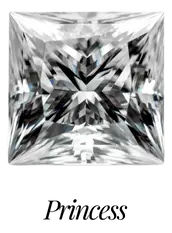
What it says: You love clean lines and structured elegance. The princess cut has all the fire and brilliance of a round diamond but in a sleek, geometric shape.
The details: This cut is known for its sharp corners and high brilliance, making it one of the most brilliant square cuts available. However, because of its pointed corners, it can be more prone to chipping if not set securely – prongs on each corner are essential.
Fact: The princess cut was developed in the 1980s as a modern alternative to the round brilliant. Its faceting style allows for more of the rough diamond to be used, making it a budget-friendly choice.
Cuts for the Non-Traditionalist…
If you’re after something less obvious, these might be more your speed:
Asscher Cut: Art Deco Luxe
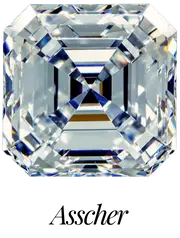
What it says: You have an appreciation for vintage glamour and geometric beauty. The Asscher cut is a square version of the emerald cut, known for its deep steps and incredible depth.
The details: The deep pavilion and high crown give this cut a distinctive flash rather than sparkle. Like the emerald cut, it shows clarity more than brilliance, so opting for a higher clarity grade is recommended.
Fact: The Asscher cut was first developed in 1902 and saw a huge revival in the 1920s with the Art Deco movement.
Marquise: Beautiful Weaponry
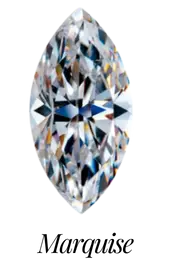
What it says: You love bold, dramatic elegance, and quite fancy a diamond that looks like it could double up as a weapon. The marquise cut’s elongated shape and pointed tips create an attitude-y silhouette that maximises size and finger spread.
The details: Marquise diamonds have one of the largest face-up sizes per carat weight, meaning they look huge compared to other shapes. They also elongate the finger for a flattering, slender effect. Symmetry is key here – both points should be perfectly aligned to avoid an uneven appearance.
Fact: The marquise cut was reportedly commissioned by King Louis XV of France to resemble the smile of his mistress, the Marchioness of Pompadour. Ooh la la.
Rose Cut: If ‘Quiet Luxury’ Was a Diamond
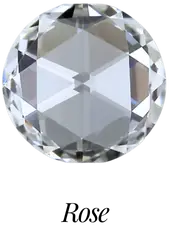
What it says: You love subtle, antique-inspired jewellery with a soft glow. The rose cut has a flat base and a domed top covered in triangular facets, creating a delicate shimmer rather than a brilliant sparkle.
The details: Because it doesn’t have a deep pavilion like modern cuts, rose-cut diamonds appear larger for their carat weight and sit lower on the finger, making them an elegant choice for vintage settings.
Fact: The rose cut dates back to the 1500s and was a favourite during the Georgian and Victorian eras.
Portuguese Cut: The Brilliance Booster
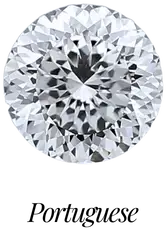
What it says: You want a cut that maximises sparkle. The Portuguese cut has more facets than most traditional shapes – typically around 161 – giving it an intense, eye-catching brilliance.
The details: The high facet count makes this cut incredibly sparkly but also means it requires expert craftsmanship to maintain symmetry and light performance.
Fact: The Portuguese cut is one of the oldest known diamond faceting styles, originating in the 18th century. Despite the sparkle factor it’s nowhere near as common as round brilliants – a wonderful choice for something a little different.
Size Matters (But Not How You Think)
Once you’ve chosen the shape, next comes size. And no, bigger isn’t always better – it’s about what suits your hand, lifestyle, and budget.
- Visual impact: A well-cut oval or marquise will always look bigger than a round brilliant of the same carat weight.
- Practicality: If you’re active, consider a bezel setting to protect your stone. High-set diamonds can snag on things (cue daily frustration, and a lot of sweater fluff in your setting).
- Budget smarts: Instead of a ‘magic weight’ (like 1.00ct or 2.00ct), go just under (0.90ct or 1.90ct) to save on cost with no noticeable size difference.

